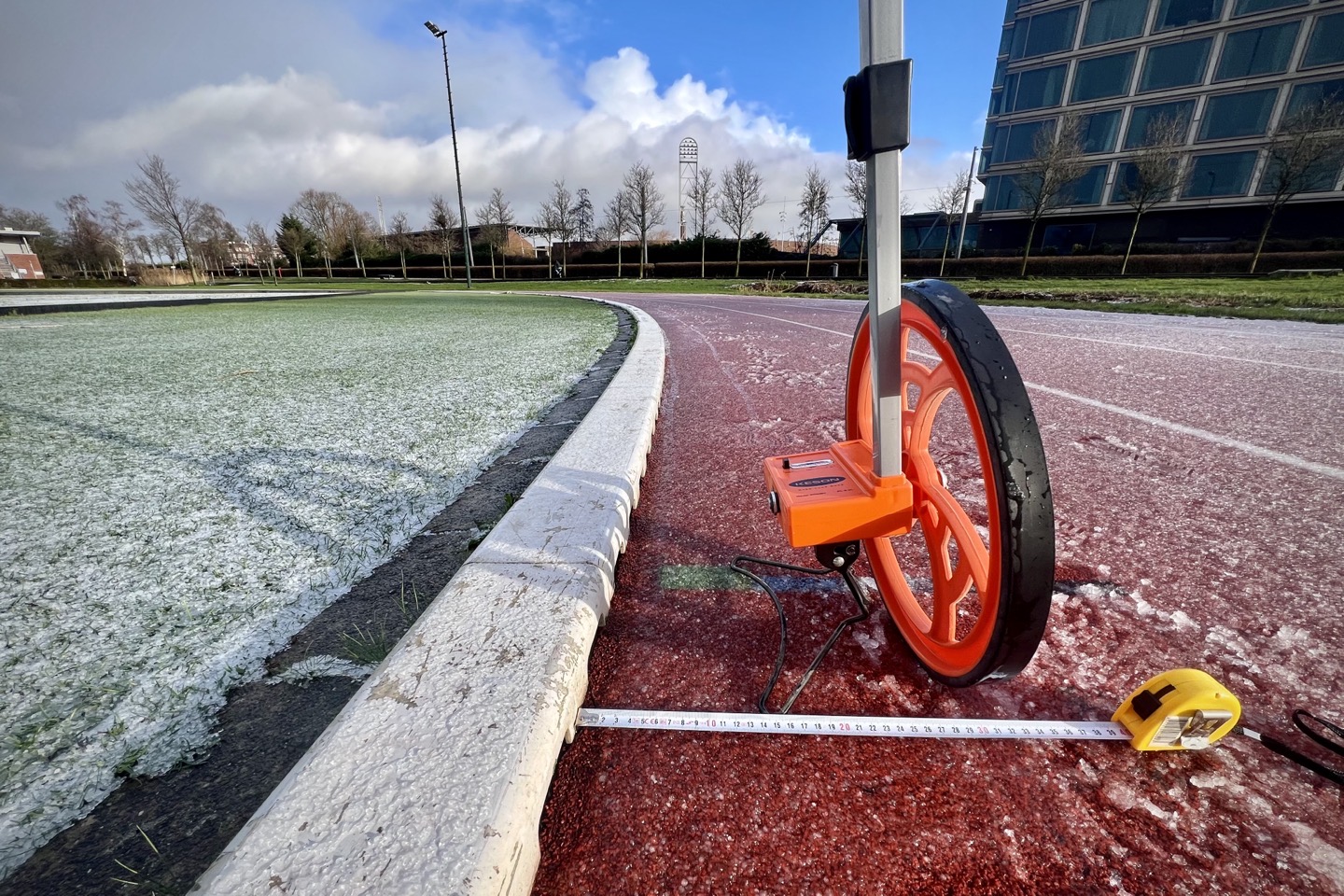
Last week I posted about the update to Garmin’s wearables that now includes a database of running tracks for their running track mode, in addition to the pre-existing ‘learned’ track mode where it learns the running track you have without an entry into the database.
When I did so, someone who runs in the greater Amsterdam area commented on the YouTube video saying that running track wasn’t actually 400m on the inside lane (Lane #1). A brief exchange with the person via YouTube confirmed it was this specific track, which is the Sports park De Schinkel Athletic Track (officially listed as “Amsterdam Schinkeleiland”).
I found that claim a bit odd for a number of reasons, notably:
- A) I’ve used this track for half a decade, for countless videos/posts viewed by millions of peoples (many in Amsterdam), and nobody has ever said anything
- B) There’s tons of markings on this track, as well signs around the track for all assortment of things, none of which indicate it’s “short”, and the Dutch are very much into being official on stuff
- C) It’s used for some school competitions and club training
- D) It’s also the warm-up track for Olympic Stadium, directly next door
- E) Garmin and COROS track measurement for years has put it at 400m
- F) When Wahoo created their track running mode, knowing I’d likely be testing it on this track (as it’s just 300m from the DCR Cave), they even came up and measured and validated the track
- G) Apple’s own database has it as a 400m track on Lane 1
- H) The old man at the track said, incredulously, that “of course” it’s 400m on lane 1.
Now, with all that said, I was still intrigued – because you know what they say: Never listen to people on the internet.
Obviously, I listened. Welcome to the Rabbit Hole.
But I had good reason. Certainly, I use this track constantly as a reference for testing devices, and thus, if somehow I was running in the wrong lane, or the track length was ‘special’, or whatever, I’d definitely want to know.
Thus, this morning, following a hail storm, I went out with my handy-dandy measuring wheel:
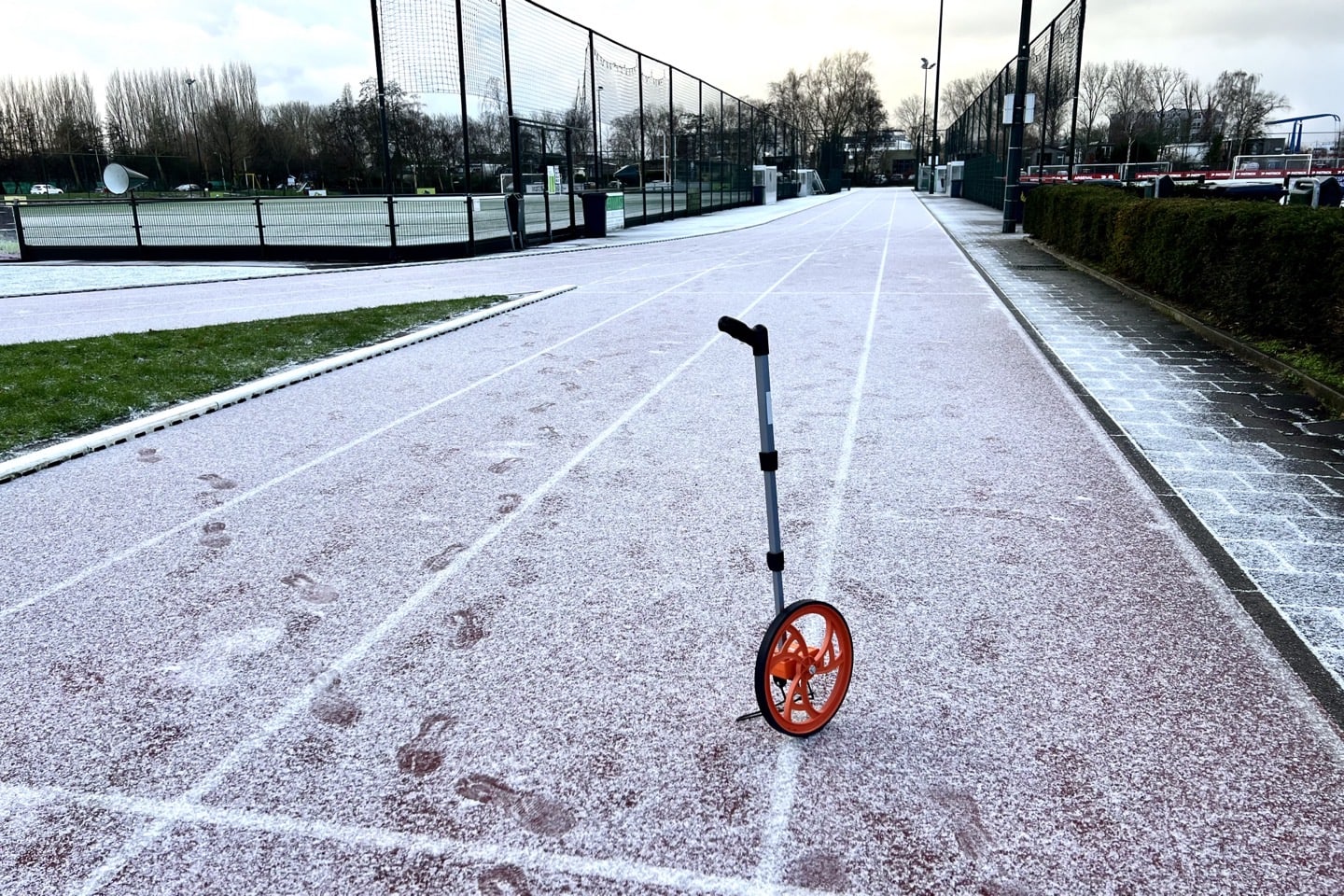
I bought this and another version 15 years ago, when in Washington DC, and doing various accuracy testing then. It’s in feet/inches, cause, America (side note: How crazy is it that I can link rabbit-hole posts from 15 years ago?!?). But that’s fine, I’ve got Google to translate Americana to Everyone Else.
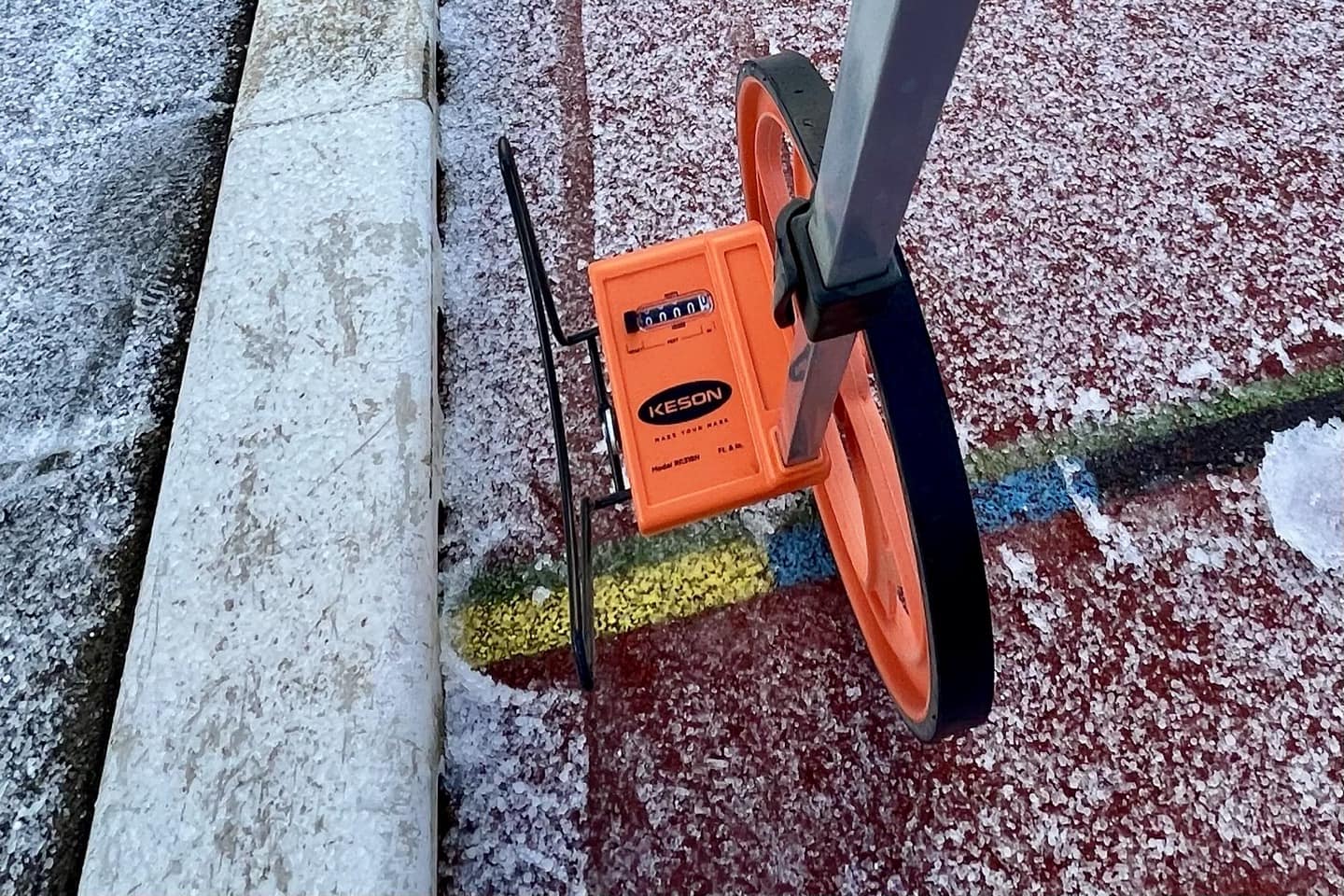
Now, the implication this person was making, was that Lane 1 is somehow short. As most readers of this site know, running track lanes vary by distance, getting longer and longer as you go towards the outside. For an internationally compliant track, the distances as as follows:
Lane 1: 400.0m
Lane 2: 407.7m
Lane 3: 415.3m
Lane 4: 423.0m
Lane 5: 430.7m
Lane 6: 438.3m
Lane 7: 446.0m
Lane 8: 453.7m
Now comes the question of *where* exactly do you measure the inside lane from? The left edge, the middle, the right edge? Somewhere else entirely? Well, turns out there are three answers to this:
Answer #1: I initially Googled lightly from my phone, and a few sites/peoples/forums said “the inner most edge of the track”. These sites/people are wrong, ignore them.
Answer #2: Then, I got more serious in my Googling. The next site said “20-30cm”, which, seemed imprecise – but also something oddly specific to note.
Answer #3: More Googling, and I found my answer: It’s either 20cm or 30cm, depending on exactly where you’re measuring it.
Here, let me explain, from the IIAF technical information website, the exact specifications are according to the Track and Field facilities manual, is as follows:
If the inner track border of lane 1 is raised on curves (e.g. a curb): 30cm
Each subsequent lane (e.g. Lanes 2-8): 20cm
Here’s the applicable section on Page 29 of the most recent manual (2019, Chapters 1-3):
Note there does seem to be references that if the curves lack a ‘curb’, they should also be measured at 20cm instead of 30cm.
In fact, that entire document is absolutely fascinating. It covers more math and measurement craziness than you’d ever imagine. Such as this image:
Ok, armed with this information, I headed out to the track. First, for fun (and totally useless data), I decided to measure as close to the inside curve as possible, right against it. This is obviously *FAR* less than 20cm, but I was curious how much less (and the document said this should be 398.116m). Also, did I mention it was hailing out?
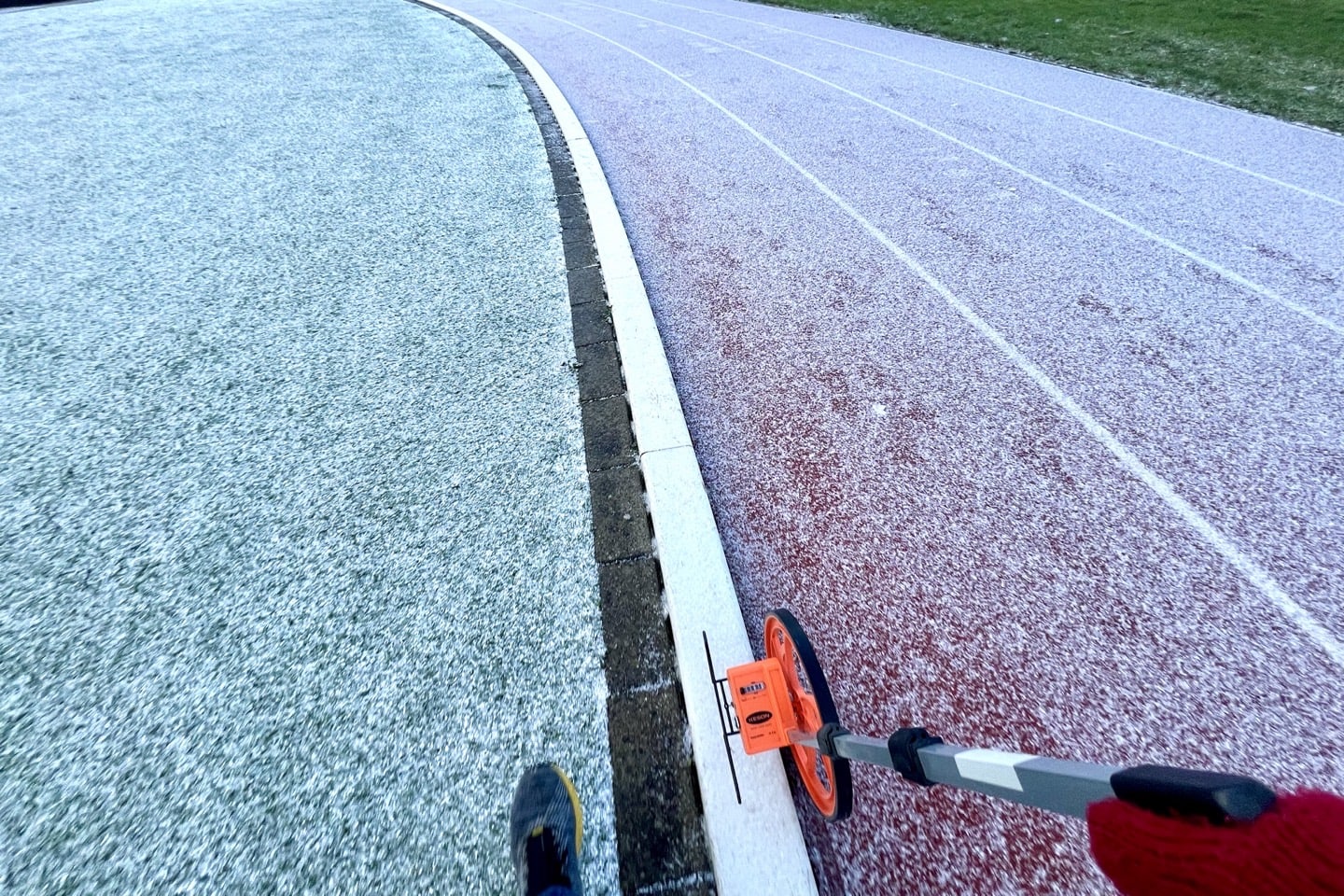
In this configuration, accounting for my imprecision as well as a tiny bit of slippage on the hail (which did *not* stick to the wheel, as snow might have, as you can see below), it measured 397.764m – thus, I was within half a meter. Pretty damn solid!
Next, I gave it another whirl, this time trying to stay about 30cm off the centerline (the official measuring line), or roughly 11.8”. I would occasionally double-check my distance to the curb using a measuring tap, but as you can see below, I’d slowly drift inwards a tiny bit on the curves.
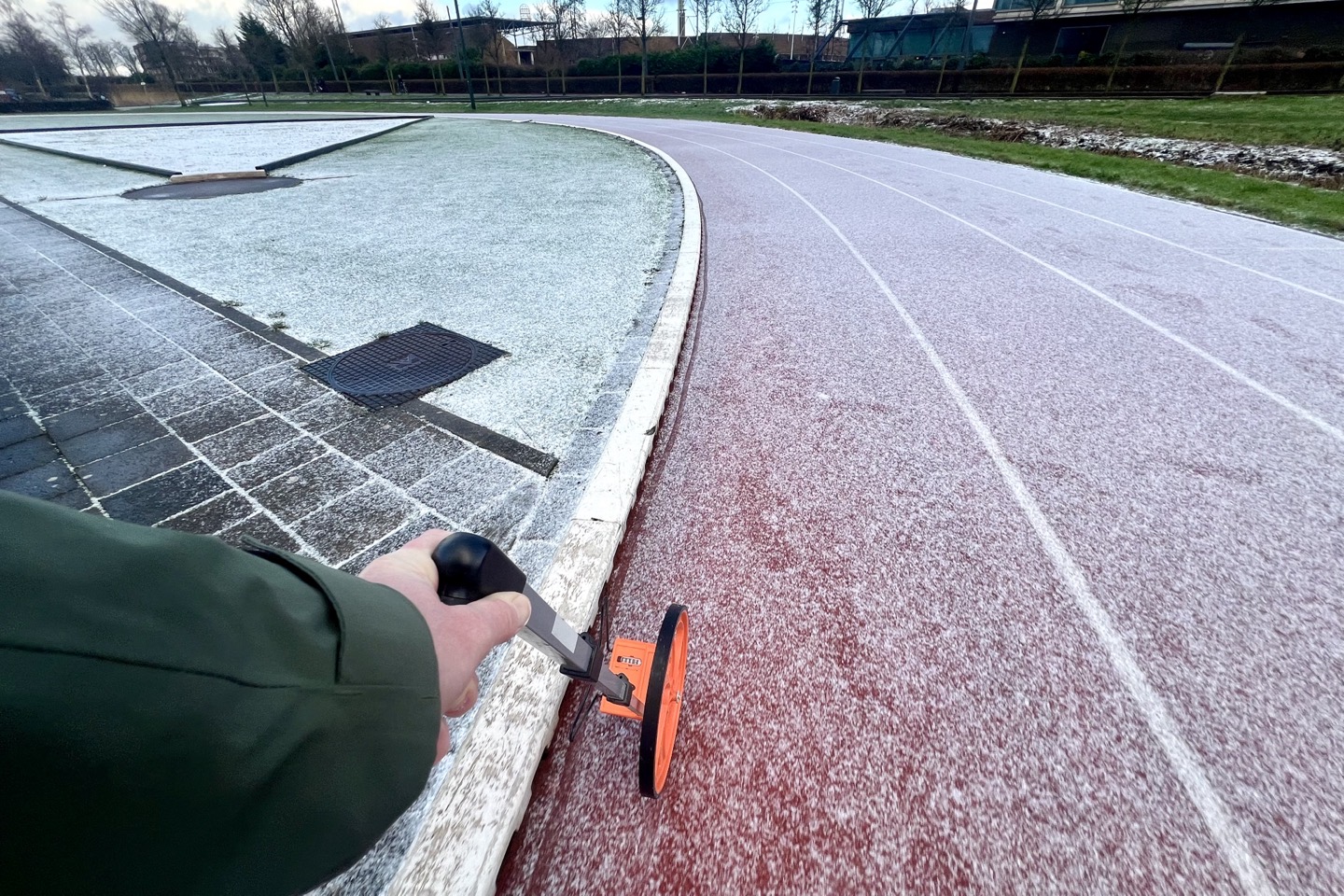
On the first 30cm go-around, I measured 398.983m, and then I came back an hour later and measured 398.861m.
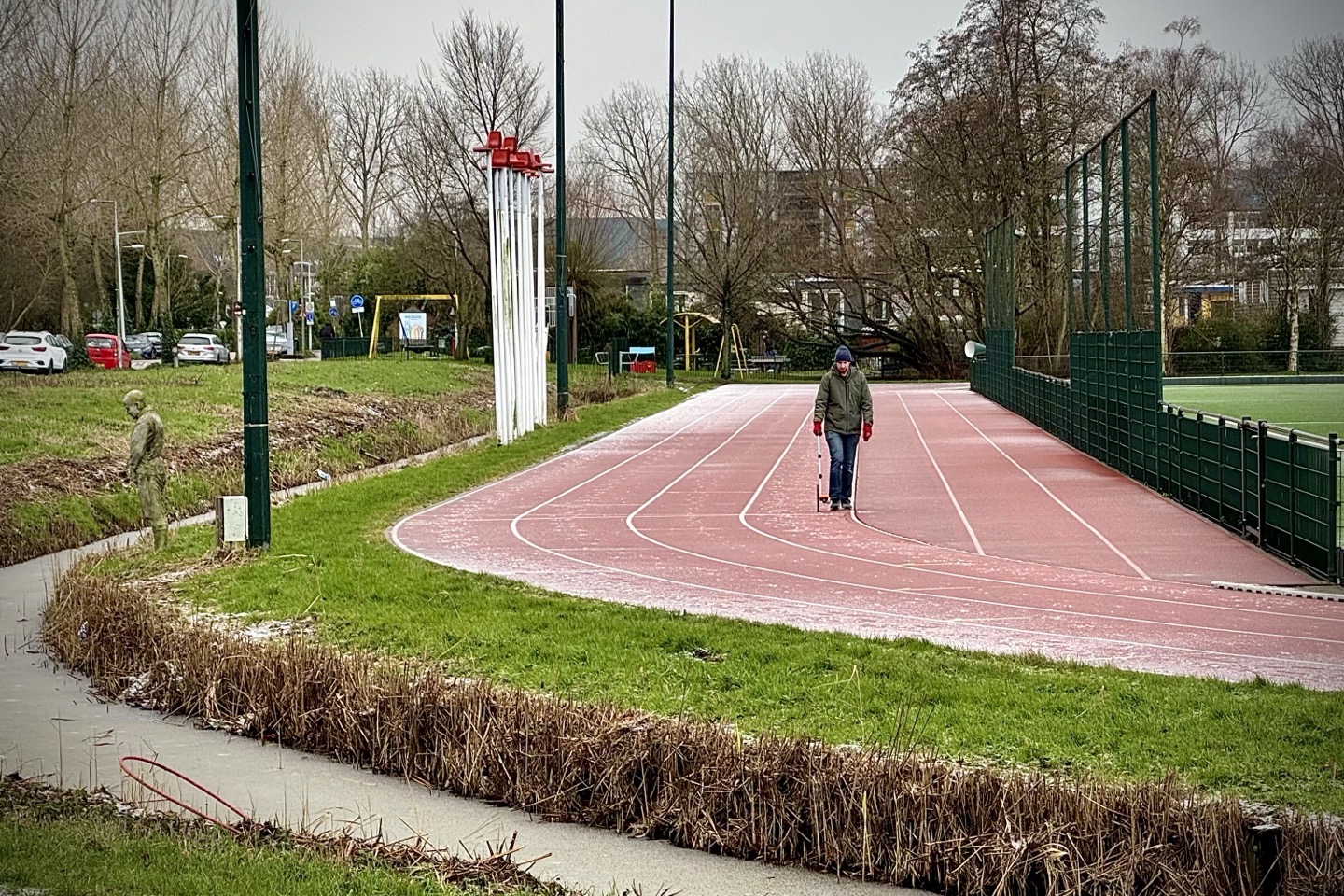
Overall, pretty damn close. Of course, even with my apparent accuracy of 99.75%, there are a few likely logical reasons why it’s still about 1-meter short):
1) My inability to stay exactly 30cm off the edge, notably on the curves where I tended to gravitate inwards
2) Probably a little bit of wheel slippage with the snow/ice/hail (which would under measure)
3) My 15-year old measuring wheel has been boxed up and moved across the ocean once, then again within Europe once, and also just bumbles around the cave/storage room.
But, I was still not satisfied. I need, somehow, more proof than just math and measurement magic. I needed official confirmation.
So, I started poking around those signs. They were useless in terms of measurements, but they did provide contact information to book the track and ask questions.
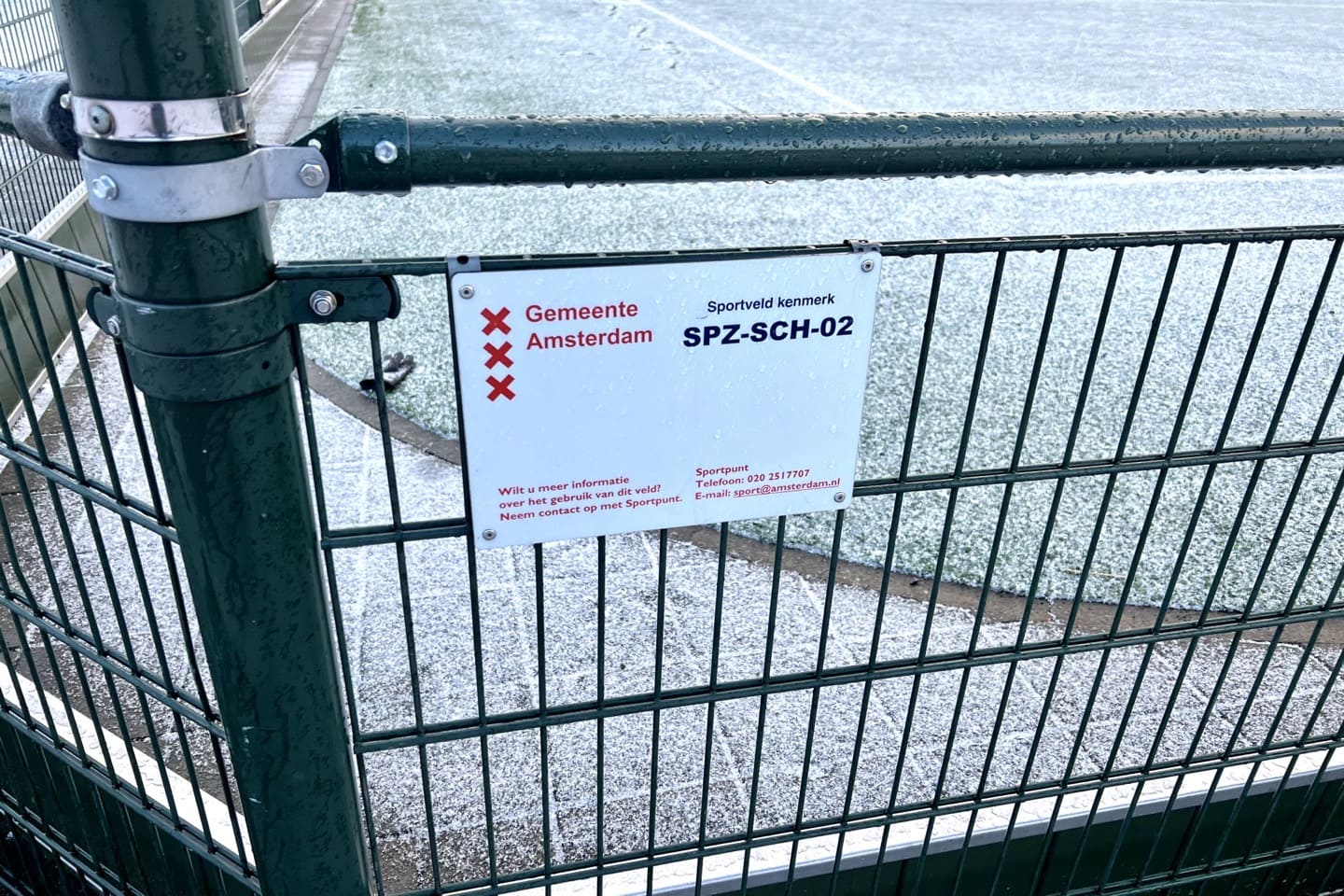
At that point, I realized that perhaps the city has a website about the track (since this is a totally open community track without any gates/fences around it, nor restricted times), with more details. It didn’t have much in the way of details, but, armed with the exact official name of the track, I went back to Google.
And, more googling later, I found the Dutch authority on inspection and certification of tracks, which does so in compliance with IAAF certification standards. They handily listed the track there, along with the recurring inspection expiration date, showing it as a 400m track:

Even more useful, each track on that listing also has a nifty two-page document indicating exactly what was certified, and which components meet certification standards. For example, this track has four valid lanes for races (it’s a bit smaller lane-count-wise), but some of the secondary faux lanes on the straightaway (used for funnies) aren’t valid. Again, it’s designed as a warm-up track for Olympic Stadium next door, thus, it does not meet the 8-lane requirement for a normal track meet (hence why it shows ‘Nee’ there, because if someone planned a track meet there, they’d be rather disappointed to find it missing half the lanes):
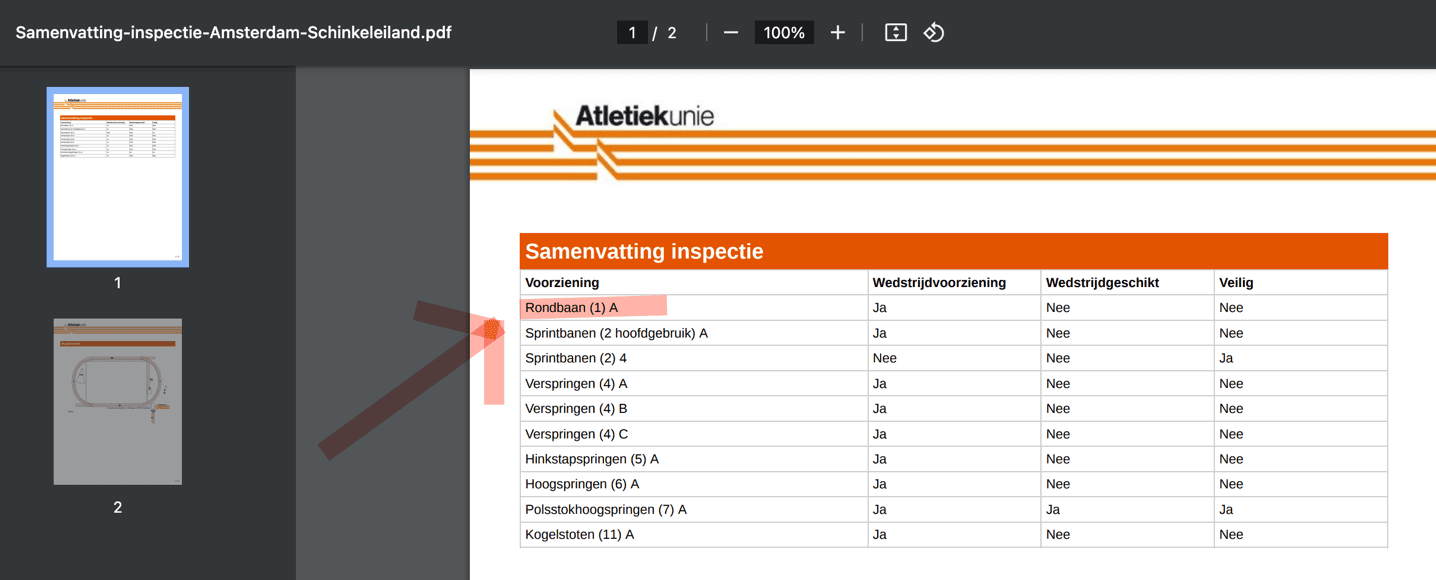
But of course, it shows the 400m type rating earlier on.
Still, I was not satisfied. Nearby, there were some workers with super fancy laser measurement, so I asked if they could come settle this internet dispute:
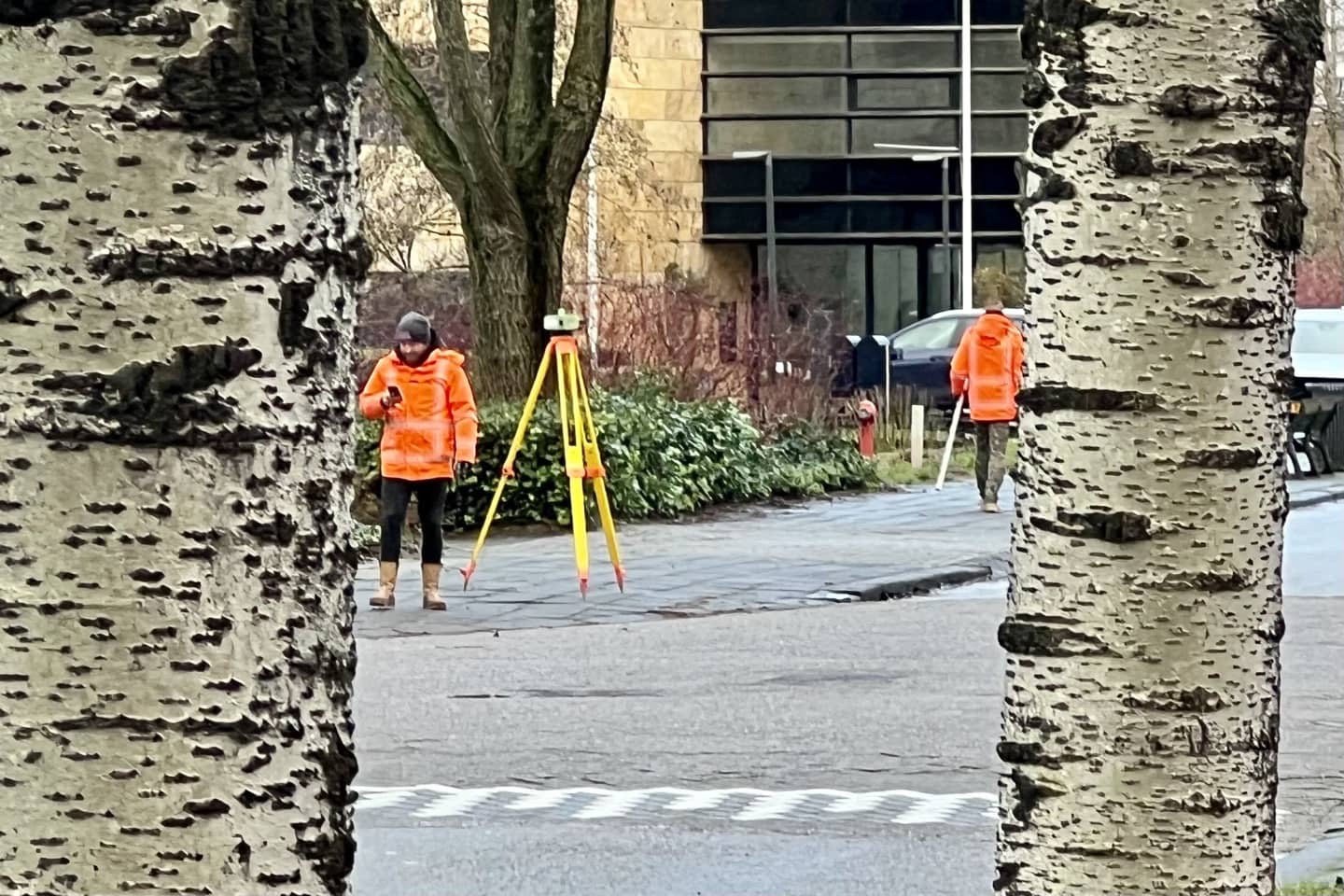
Just kidding, I didn’t ask them. But was tempted.
Finally, just because…overkill, my wife texted someone we know that: Leads a running club that uses the track weekly, has access to Olympic Stadium to do running events, and works at the local running store. They too, confirmed that it’s 400m, but noted that “some people incorrectly assume it’s shorter” because it has fewer lanes than an 8-lane track, and thus “feels smaller”. But that Lane 1 is most definitely 400m.
Thus, in the words of the Moana song my daughters can’t stop singing, and is permanently stuck in my head: You’re Welcome.
Or: Never doubt the old man at the track.
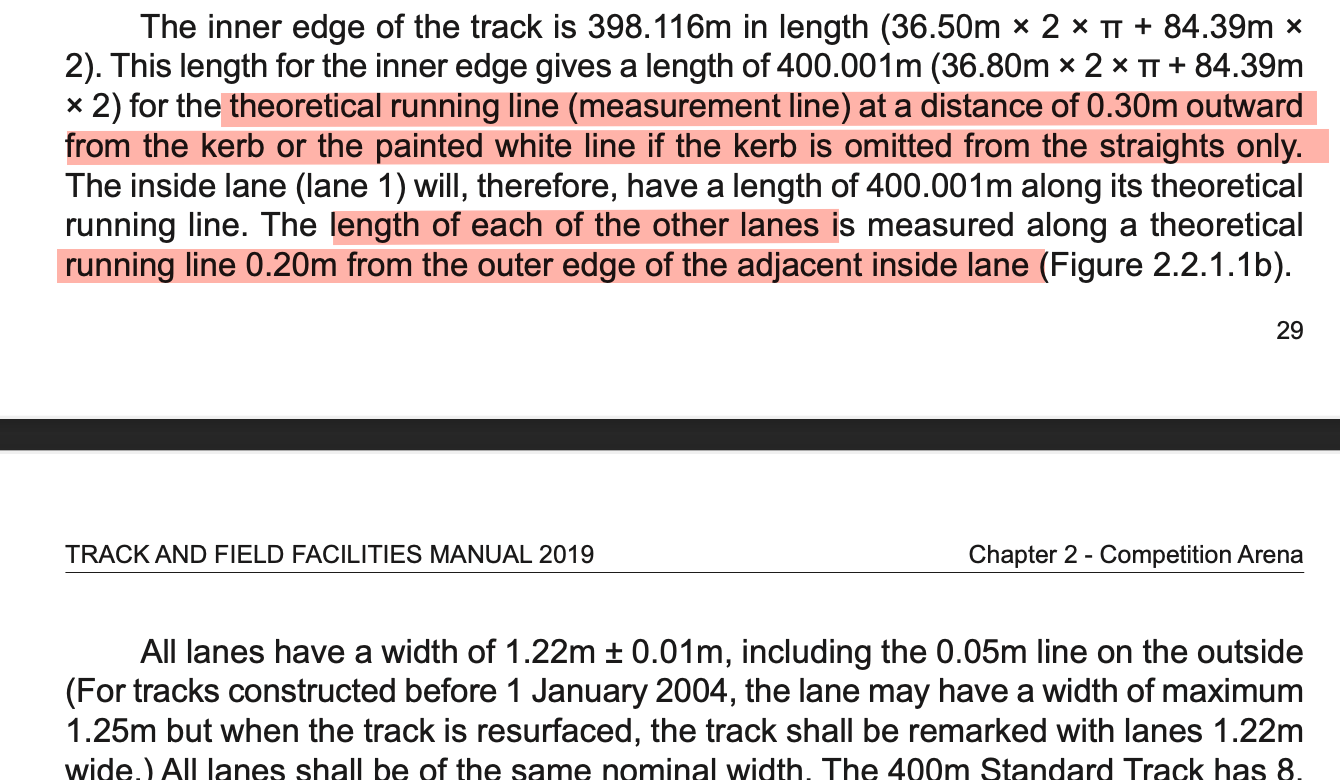
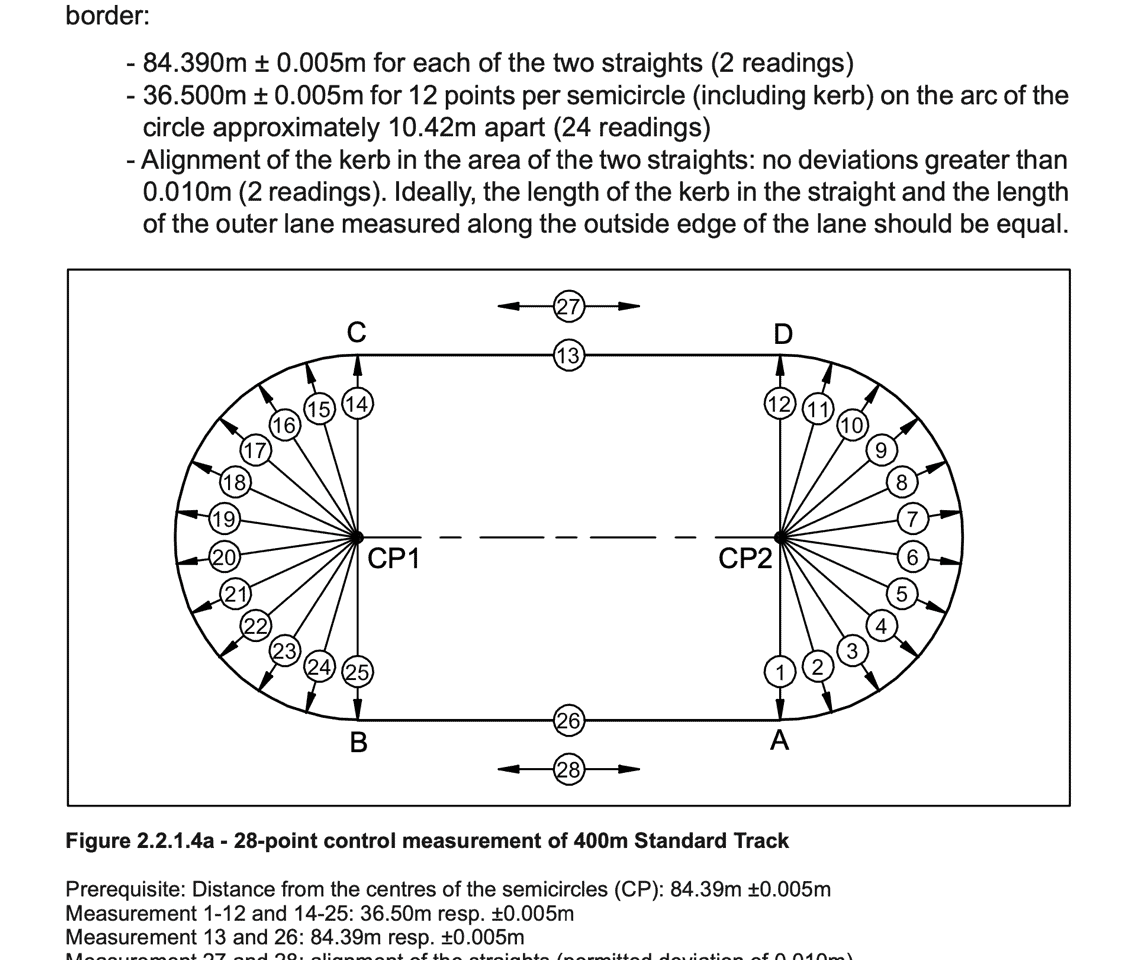

0 Commentaires